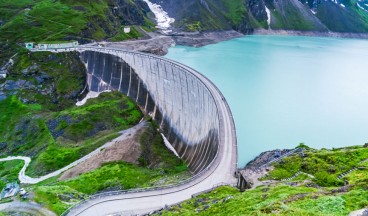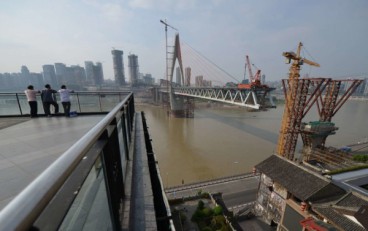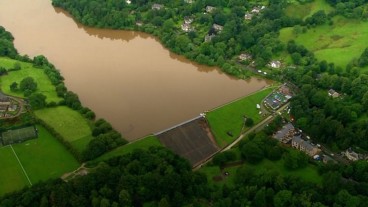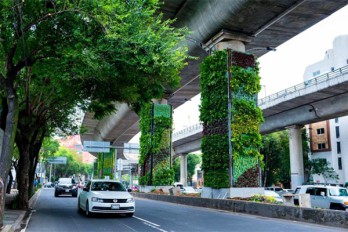Vast environmental impact expected by the Nova Kakhovka breach in Ukraine
- Jun, 06, 2023
- Dam Engineering Earth / Rockfill Dams Concrete / Rollercrete Dams Damage (Structural) Blasting Effects Other Structural Geoenvironmental Engineering Contaminant Transport General Civil Environmental Engineering News On Natural Disasters / Failures Other News
- Ukraine
- Authored by: TheCivilEngineer.org

The Nova Kakhovka dam, the largest dam in Ukraine in terms of volume and one of the largest in the world, was breached in the early morning hours of June 6.
Its construction started in 1950 and lasted until 1956, while it consisted of an earth embankment dam and a hydroelectric power generation unit. The area of the breach was located at a 35-meter high and 85-meter-long area, consisting of concrete gravity dam.
The reasons behind the dam’s failure have not yet been clarified but two main theories exist so far. The first supports that the breach was caused by an explosion, as the area is heavily contested by the Russian and Ukrainian sides. Chris Binnnie, visiting professor at the University of Exeter and chair of Tidal Engineering and Environmental Services, explains that the most likely scenario in this case is an internal explosion, since shelling of the dam’s top part would not cause damage to that extent.
The second theory concerns structural damage leading to the dam’s failure. Furthermore, satellite imagery shows that between June 1 and 2 the road bridge on top of the dam was damaged, and the structure’s overall structural performance could have been compromised by the event.
An estimated of at least 40,000 people have been affected by the event so far, while it is expected to cause environmental damage to a great extent.
Tens of thousands of hectares of agricultural land are expected to flood, according to the Ukrainian Agricultural Ministry, affecting the environment, livestock, crops, and wildlife of the area. The destruction of the dam is also expected to greatly affect the irrigation capacity of the surrounding areas.
In addition to this, about 400 tons of turbine oil were present in the hydroelectric plant, with an estimated 150 having already been spilled into the environment. Fears have arisen that this oil, combined with extra hazardous materials transported from the flooded populated areas, could cause contamination of the surrounding environment.
Finally, the Zaporizhzhia nuclear plant, Europe’s largest nuclear power station relies on the reservoir for cooling water. However, the International Atomic Energy agency said the war no immediate risk.
Sources: edition.cnn.com, edition.cnn.com, edition.cnn.com, www.theguardian.com, www.independent.co.uk, en.wikipedia.org
Want to read more like this story?

From Aging Infrastructure to Extreme Rainfall: The Growing Importance of Dam Structural Engineering
Oct, 07, 2024 | NewsDams have been integral to human civilization for centuries, playing critical roles in water storag...
Hoover Dam transformer explosion: no fatality was reported
Jul, 21, 2022 | NewsA transformer exploded on Tuesday at Hoover Dam, one of the nation's largest hydroelectric faciliti...
Days of heavy rain cause partial collapse of Norwegian dam
Aug, 10, 2023 | NewsPart of a dam at the Braskereidfoss hydroelectric power plant, located on the Glomma River, Norway,...

40 years after Kelly Barnes dam failure
Nov, 06, 2017 | NewsOn this day in 1977, a small embankment dam located above Toccoa Falls Bible College in Georgia fail...

China Blocks Yangtze Dam Project, According to Activists
Apr, 10, 2015 | NewsAccording to environmental activists, the Chinese Ministry of Environmental Protection has issued an...

Potential Mosul Dam Failure Puts Millions at Risk
May, 23, 2016 | NewsThe Mosul Dam on the Tigris River in northern Iraq is the largest Dam in the country and provides po...

The Hoover dam reaches all-time low water level
Jun, 22, 2021 | NewsHoover Dam, one of the most iconic dams ever constructed, has reached its lowest water level in his...

The causes of the Whaley Bridge dam failure
Mar, 27, 2020 | NewsBack in August 2019, the Whaley bridge dam partially collapsed and officials evacuated a town in fe...

Largest Dam Safety Project in USACE History. Tackling the problem of ageing dams.
Jun, 12, 2024 | NewsAt the end of 2023, contractors from ten construction and engineering firms gathered at the Garriso...
Trending

Vertical gardens in Mexico City to combat pollution

Characteristics of Load Bearing Masonry Construction

Taipei 101’s impressive tuned mass damper

Dutch greenhouses have revolutionized modern farming

The Line at Neom faces feasibility reassessment while construction continues

The Line at Neom faces feasibility reassessment while construction continues

King Salman Gate unveiled adjacent to Mecca’s Grand Mosque

